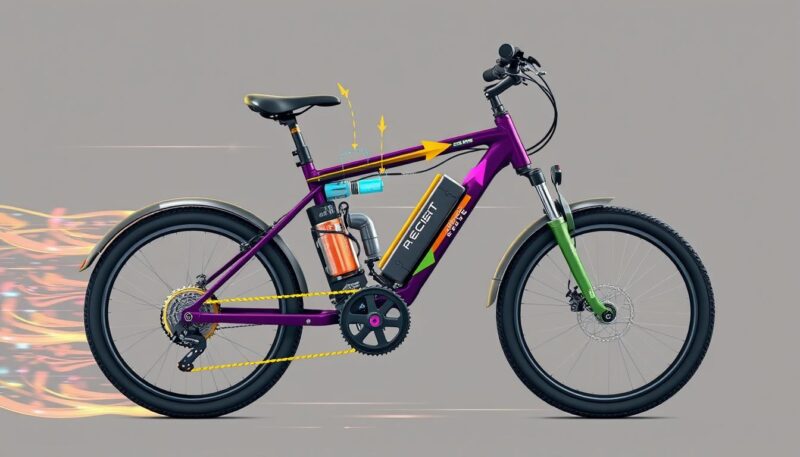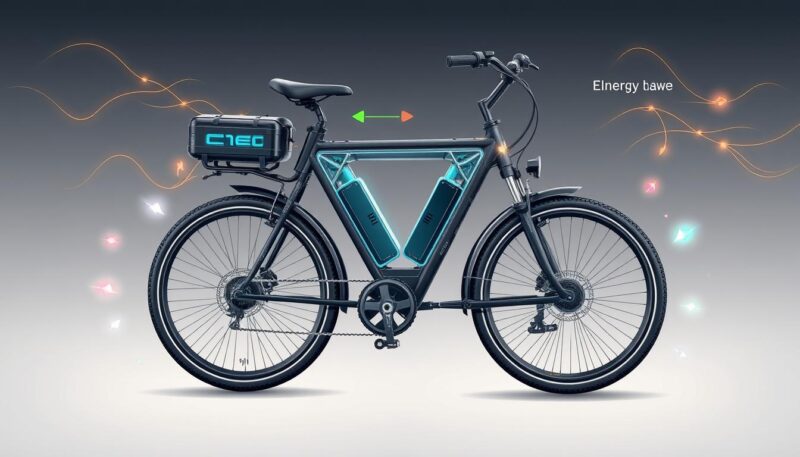Electric bikes, widely known as e-bikes, have transformed the way you commute and explore your surroundings. Merging the comfort of traditional bicycles with cutting-edge electric technology, they offer riders an innovative solution to make cycling easier and more enjoyable. You might be wondering, how do electric bikes work? In essence, they utilize a rechargeable battery coupled with an electric motor that assists you while pedaling, especially beneficial for tackling longer distances or navigating hilly terrains. Moreover, these electric bike batteries are structured to enhance your riding experience, propelling you to speeds set by federal regulations, typically ranging between 20 to 28 miles per hour.
Understanding the core components of an electric bike is crucial to making an informed decision about which model suits your lifestyle best. From batteries to motors and their integrated control systems, each part plays a pivotal role in determining performance and efficiency. As you delve deeper into this topic, you’ll appreciate the myriad benefits of riding an electric bike, including improved mobility, reduced reliance on fossil fuels, and an exhilarating way to maintain an active lifestyle.
Understanding Electric Bike Components
The performance and utility of electric bikes stem from their key components, which work together to create an enjoyable riding experience. Understanding electric bike components, including the battery, motor, and various control systems, will help you make informed decisions about your e-bike investment.
The Role of the Battery
Electric bike batteries explained reveal that these power sources are fundamental to e-bike operation. Most modern e-bikes use lithium-ion batteries due to their efficiency and longevity, typically lasting over 5-6 years with regular use. Voltage ratings play a significant role in determining performance, with premium batteries commonly offering 48 or 52 volts. Juiced Bikes is an example of a manufacturer that provides industry-leading 52-volt batteries. A 52-volt battery with a capacity of 13 amp-hours translates to 676 watt-hours of energy. This measurement can help you estimate battery life when riding at full throttle, significantly impacting your riding range and overall experience.
Electric Bike Motors Explained
Now, let’s discuss electric bike motors, which are vital for propulsion. The type of motor you choose can greatly influence performance. Options include mid-drive and hub motors. Mid-drive motors are often located near the bike’s center of gravity, providing better weight distribution and efficiency on hills and rough terrain. Conversely, hub motors, found in the wheel hub, can be geared or direct drive. The motor winding constant, known as Kv, is important for understanding how the motor will behave under different voltage inputs. Most hub motors are typically wound for approximately 8 rpm/V, but higher winding options are available for specific riding styles.
The Importance of Sensors and Controllers
Sensors and controllers are crucial for electric bike functionality. These components significantly impact how the electric bike reacts to your pedaling and throttle input. Controllers convert the battery’s power into alternating current (AC) for the motor while managing voltage to optimize performance. They contain essential elements like power mosfets and connectors for various features, including throttles and brake cutoffs. This system ensures that your motor delivers the right level of assistance based on your needs, enhancing the overall riding experience while prioritizing safety.
How Do Electric Bikes Work
Understanding how do electric bikes work requires familiarizing yourself with their key features, particularly the systems that provide assistance during your ride. Most modern e-bikes utilize a pedal-assist system, commonly referred to as PAS, which activates the motor when you begin pedaling. This system offers varying levels of power assistance, allowing you to choose how much help you want based on your riding conditions and fitness level.
Pedal-Assist and Throttle Systems
Electric bikes can operate through pedal-assist or throttle systems. In a pedal-assist setup, as you pedal, the motor kicks in to enhance your power output, promoting a smooth cycling experience. The assistance level may range from light to heavy, catering to different rider preferences. In contrast, throttle systems allow you to accelerate without pedaling, similar to riding a scooter. This gives you control via a throttle, similar to a gas pedal, which increases the electricity usage from the bike’s battery.
Classifications of Electric Bikes
Electric bikes fall into distinct classifications of electric bikes, which are essential for knowing where to ride them legally. They typically include:
| Class | Description | Maximum Speed | Pedal Assist Required |
|---|---|---|---|
| Class 1 | Provides assistance only when pedaling. | 20 mph | Yes |
| Class 2 | Features throttle assistance alongside pedaling. | 20 mph | No |
| Class 3 | Boosts assistance with higher speeds. | 28 mph | Yes |
Brands like Schwinn offer a variety of e-bikes with features tailored to meet these classifications, enhancing both performance and enjoyment. Understanding these differences not only helps you maximize your ride but also ensures compliance with local regulations. As you explore the array of options available in the fast-growing e-bike market, consider these classifications to choose the right fit for your needs.

Conclusion
Electric bikes offer a modern and eco-friendly alternative to traditional commuting methods, unlocking a wide array of benefits for your daily travels. The integration of electric motors with pedal assistance not only makes cycling accessible to a larger group of individuals but also enhances the riding experience, allowing everyone from casual riders to those with physical limitations to enjoy the journey. By understanding electric bike components such as batteries, motors, and sensors, you can make informed decisions in your selection process.
With the potential to replace 15% of car trips, electric bikes can contribute significantly to reducing traffic emissions, providing a more sustainable way to navigate urban environments. Moreover, the cost savings from incentive programs, which can range from $500 to $7,500, make these bikes a financially viable option for many. Consider that electric bicycles generally produce a carbon footprint that is just 1/13th of traditional gasoline-powered cars, reinforcing their importance in environmental conservation efforts.
As you explore the benefits of riding an electric bike, you’ll appreciate the technological advancements in battery life, motor efficiency, and overall design that continue to evolve. Whether you’re commuting to work or enjoying a weekend ride, embracing electric bikes can revolutionize your cycling experience, making it more enjoyable and consonant with a healthier lifestyle.






